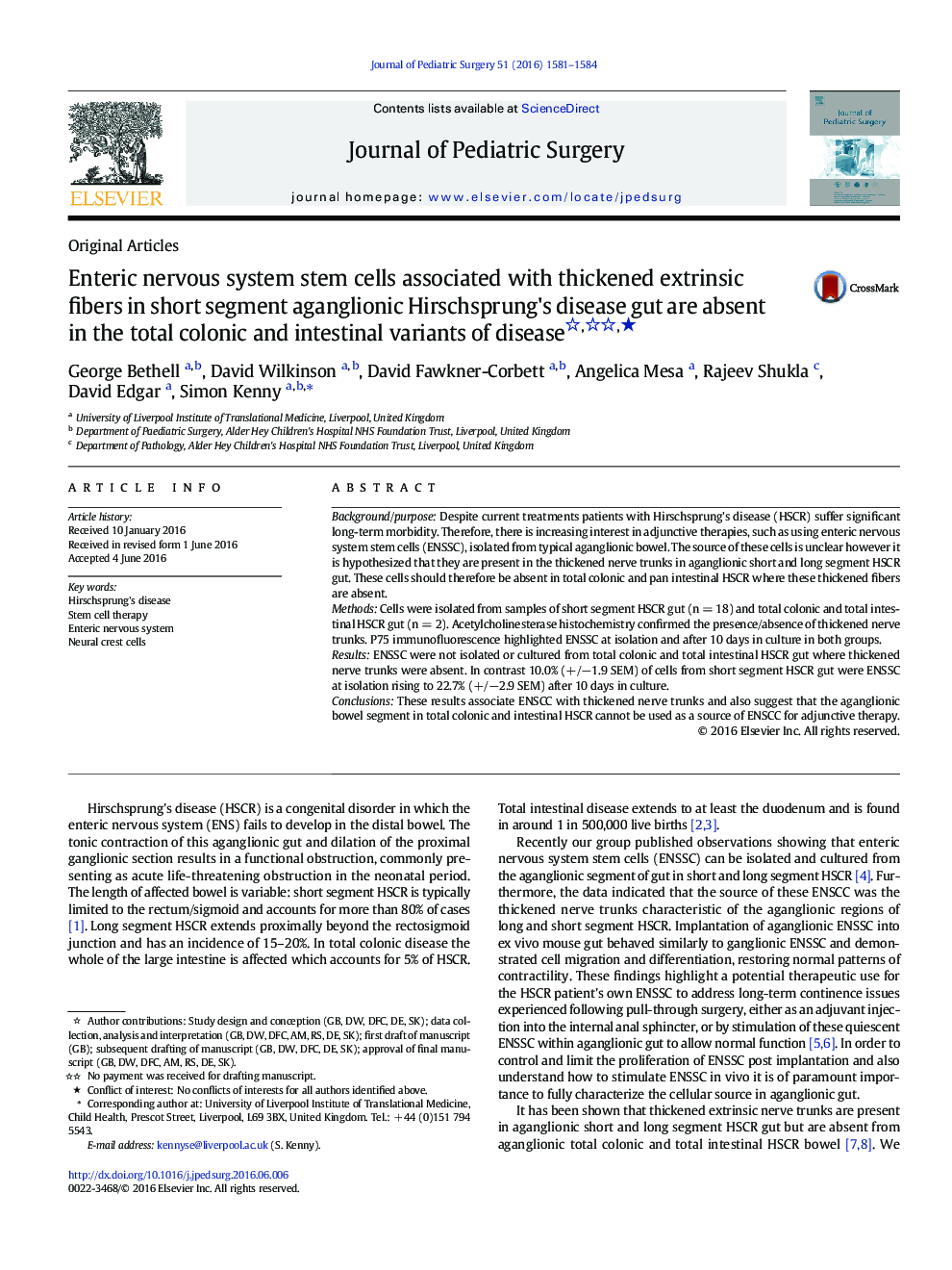| Article ID | Journal | Published Year | Pages | File Type |
|---|---|---|---|---|
| 4154661 | Journal of Pediatric Surgery | 2016 | 4 Pages |
Background/purposeDespite current treatments patients with Hirschsprung's disease (HSCR) suffer significant long-term morbidity. Therefore, there is increasing interest in adjunctive therapies, such as using enteric nervous system stem cells (ENSSC), isolated from typical aganglionic bowel. The source of these cells is unclear however it is hypothesized that they are present in the thickened nerve trunks in aganglionic short and long segment HSCR gut. These cells should therefore be absent in total colonic and pan intestinal HSCR where these thickened fibers are absent.MethodsCells were isolated from samples of short segment HSCR gut (n = 18) and total colonic and total intestinal HSCR gut (n = 2). Acetylcholinesterase histochemistry confirmed the presence/absence of thickened nerve trunks. P75 immunofluorescence highlighted ENSSC at isolation and after 10 days in culture in both groups.ResultsENSSC were not isolated or cultured from total colonic and total intestinal HSCR gut where thickened nerve trunks were absent. In contrast 10.0% (+/−1.9 SEM) of cells from short segment HSCR gut were ENSSC at isolation rising to 22.7% (+/−2.9 SEM) after 10 days in culture.ConclusionsThese results associate ENSCC with thickened nerve trunks and also suggest that the aganglionic bowel segment in total colonic and intestinal HSCR cannot be used as a source of ENSCC for adjunctive therapy.
